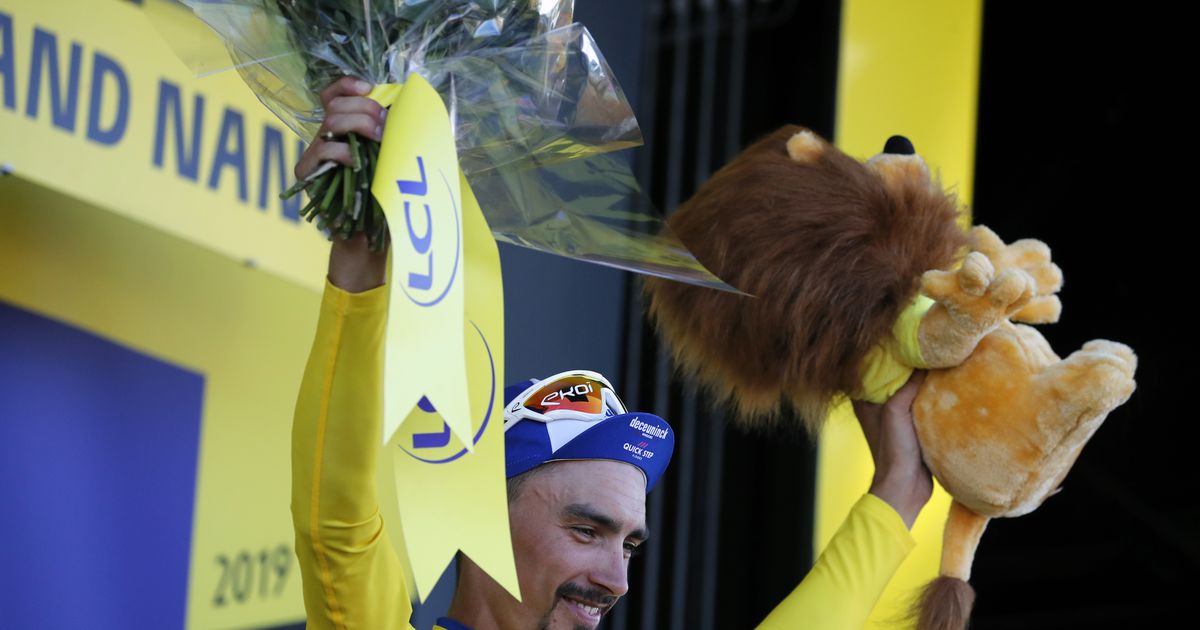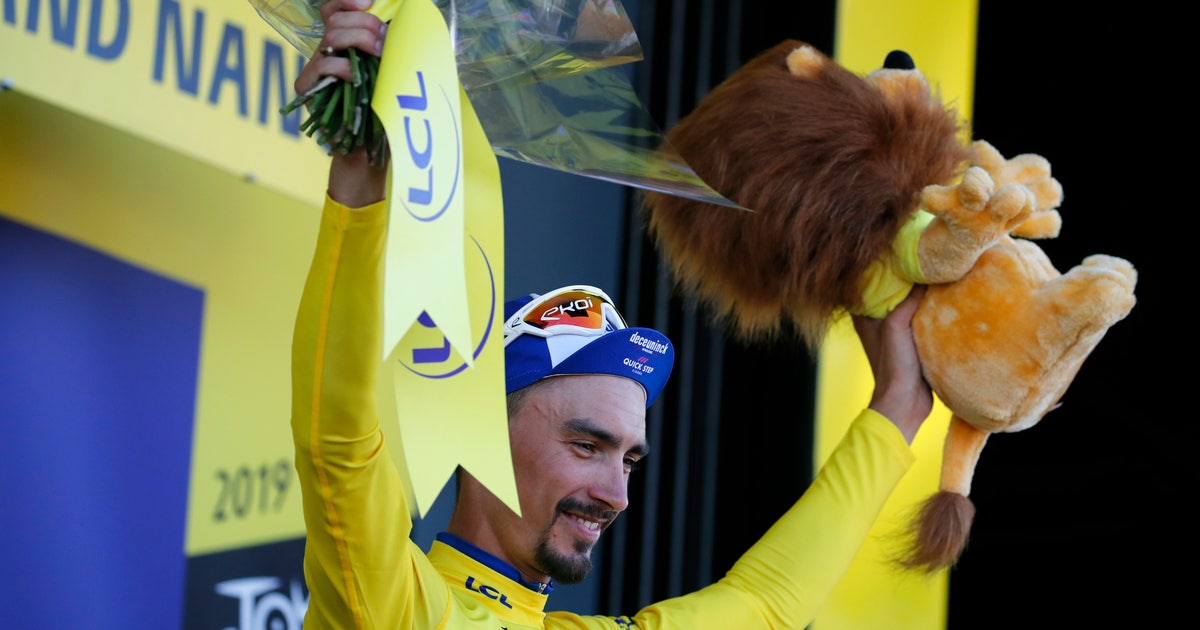Yellow jersey Alaphilippe brings panache to the Tour


COLMAR, France (AP) — In an era where riders are becoming slaves to power meters, earpieces and all sorts of technological gadgets, Frenchman Julian Alaphilippe is bringing a much-needed dose of flair into the Tour de France.
With his juvenile looks and aggressive style of racing, the 27-year-old took the Tour de France’s lead by storm earlier this week with a brilliant attack on a tough climb that left his rivals stranded.
The move earned him the yellow jersey and made him the new national hero.
“It was the victory of panache,” said Deceuninck Quick Step team manager Patrick Lefevere after his protege became the first Frenchman in five years to seize the coveted tunic.
Alaphilippe is enjoying a fast growing popularity. In every small village crossed by the peloton, fans are shouting his name when they catch a glimpse of the yellow tunic, and large groups of excited supporters surround his team bus at the start and finish of each stage.
“I’m not riding my bike to be popular, but of course all this support will help me get beyond my limits in the coming days,” Alaphilippe said.
An all-rounder who thrives on sharp and short climbs, Alaphilippe has not come from nowhere. With his devastating attacks, he posted two stage wins and won the best climber’s polka dot jersey last summer on the Tour. This year, he has been phenomenal during the first part of the season, posting victories at Milan-San Remo, the Fleche Wallonne and Strade Bianche.
But more than his successes, it’s his style of racing that makes him so exciting in a country which has been waiting for a homegrown Tour winner since cycling great Bernard Hinault last won it in 1985.
“He makes us dream,” Hinault said. “He does not hesitate, does not ask himself too many questions. This is his main asset, because win or lose, he always attacks.”
Alaphilippe can also be a zealous teammate. During Tuesday’s stage won by teammate Elia Viviani, he took part in the leadout train that set up the Italian sprinter instead of staying sheltered in the pack.
“People like the yellow jersey and the way I’m racing, but they also like panache and victories,” Alaphilippe said. “Victory is in me. I could not be happy with second places. And I could not be happy if I wore this yellow jersey without style.”
Alaphilippe’s bold temperament and instinctive way of racing are going against modern cycling’s strategies embodied by defending champion Geraint Thomas’ Ineos team. Rebranded after a change of sponsor, the former Team Sky has been the dominant squad in recent years with very efficient attrition tactics that lacked the drama and romanticism Tour fans crave.
Team Sky riders including four-time champion Chris Froome often relied on power meter data when tackling climbs, a technology that many believe is encouraging competitors to cycle cautiously.
“I’m sure Alaphilippe does not spend his day looking at his watts,” Ag2R team manager Vincent Lavenu told The Associated Press. “Not at all. He is very instinctive. He is an artist on the bike. Sometimes he makes mistakes, bing, bang, boom, not mastering his emotions and going all over the place, but that’s also what makes him strong.”
Nobody can say whether Alaphilippe will be able to win the Tour in the future. For now, he is too limited in high mountains and in time trials, but with a change of approach to his training many pundits believe he could have a shot at the general classification in a near future.
That ambition would however require a complete different way of racing, and more conservative tactics.
“I pedal in present times,” he said. “Of course it pleases me to be part of these riders who don’t make calculations, who race in an old-fashioned style. I love to attack and make unpredictable moves. You could see a lot of that in the 1970’s and 80’s. Much less today.”








